-
Destinations
All Destinations
We'll craft an unsurpassed vacation just for you.
All you'll have to do is land
Choose your destination
- Pick your Trip
-
 Build your True Trip
Build your True Trip
- How It Works
- Blog
-
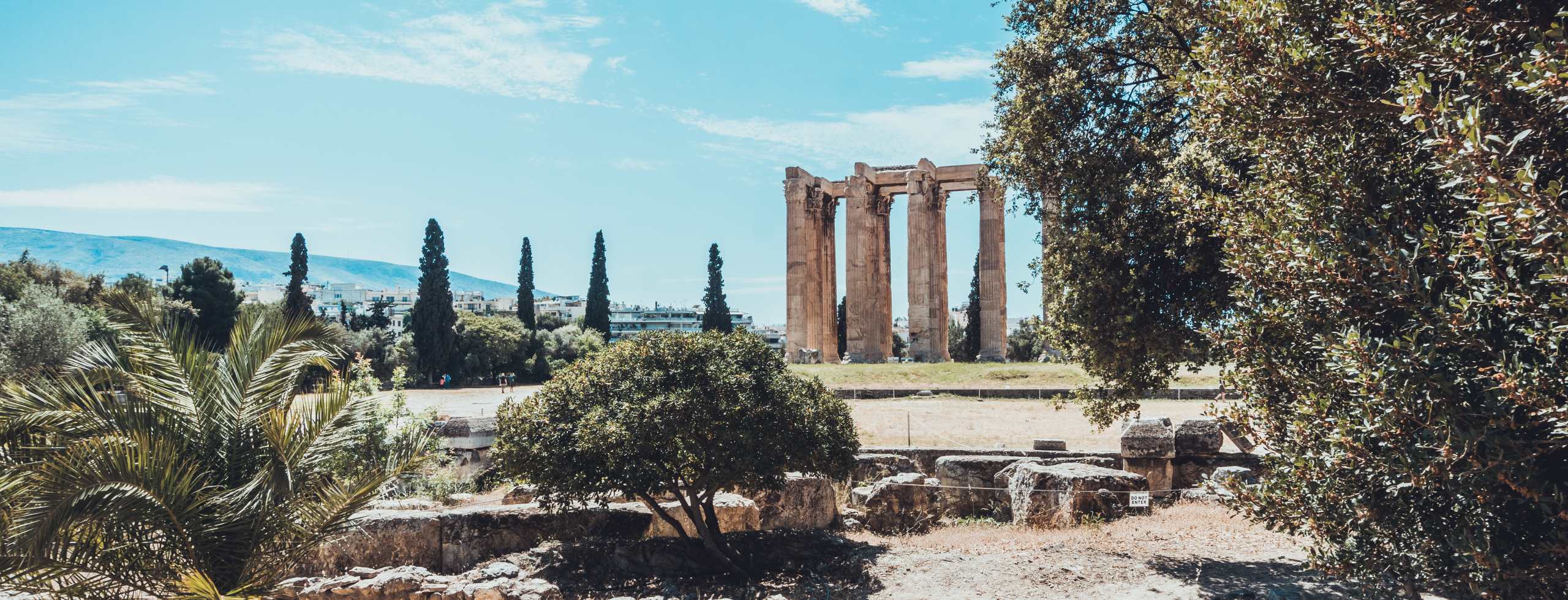
A Guide to The Peloponnese
by TrueTrips
- 1
THE PELOPONNESE THROUGH THE CENTURIES
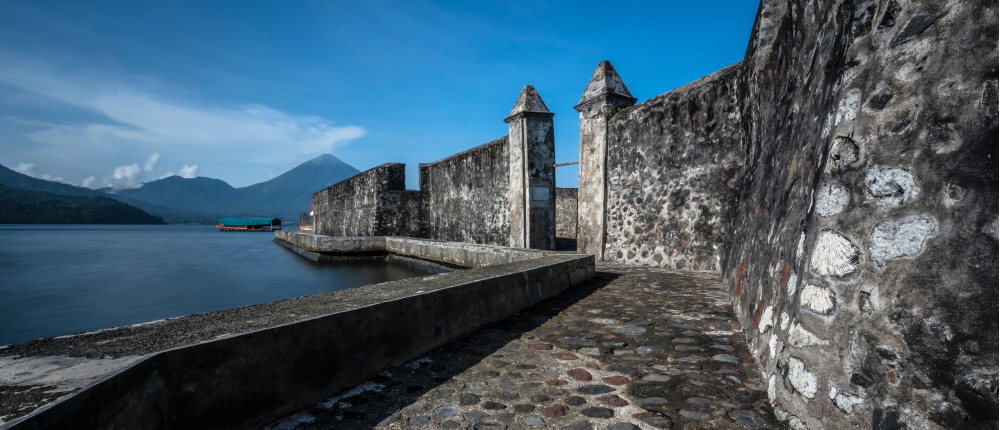
Messenia Through the Centuries
The first Greek-speaking people that settled in Messenia were known as the Achaeans, the founders of Mycenae and the fabled Mycenaean civilization. The Achaeans were displaced around 1100 BC by a new group of Greek-speaking people known as the Dorians. The later split into two groups, the first created the citadel of Sparta and made it their capital while the second established their capital at Stenyclarus in the northern plain of Messenia. The second group mixed with the longtime inhabitants of the region and became a people known as the Messenians. The Messenians prospered for some time but by the 8th century BC Messenia and its fertile fields had attracted Sparta’s attention.
Following a series of skirmishes, Sparta invaded Messenia starting a series of conflicts that spanned a period of 300 years and that became known as the Messenian Wars. Despite resistance from the local populace, Messenia was conquered and it remained under Spartan rule until 371 BC when it was eventually liberated by the famous Theban commander Epaminondas. In 370 BC Epaminondas helped the Messenians establish a new capital near modern day Messene. Two centuries later Messenia along with most of Greece was brought under Roman rule and in the ensuing centuries it became little more than a backwater territory of the Roman and later the Byzantine Empire.
Following the conquest of Constantinople in 1453, most of Greece eventually came under Ottoman rule. The Ottomans held Messenia until 1821 when the Greek Revolution began and the Turks where slowly driven out of the country. Kalamata, the modern day capital of Messenia, was the first Greek city to take up arms against the Turks, an event that is celebrated to this day. The final act of the revolution came on October 20th 1828 with the naval battle of Navarino. Historically, this event marks the end of Ottoman rule and the birth of the independent Greek state.
As a part of the newly founded nation of Greece, the people of Messenia focused primarily on agriculture. Farmers from the surrounding areas flocked to the city to trade their goods and Kalamata prospered as it became the region’s main port. Olives and figs became the region’s primary agricultural produce which led to the creation of processing plants all over the prefecture. After
World War II the region’s rural character slowly began to change. Highways and railroad networks connected Messenia to the rest of Greece, buildings that were damaged during the war were restored, and locals that migrated abroad sent money back to their relatives, greatly aiding in the effort to rebuild and start anew.
Following a series of skirmishes, Sparta invaded Messenia starting a series of conflicts that spanned a period of 300 years and that became known as the Messenian Wars. Despite resistance from the local populace, Messenia was conquered and it remained under Spartan rule until 371 BC when it was eventually liberated by the famous Theban commander Epaminondas. In 370 BC Epaminondas helped the Messenians establish a new capital near modern day Messene. Two centuries later Messenia along with most of Greece was brought under Roman rule and in the ensuing centuries it became little more than a backwater territory of the Roman and later the Byzantine Empire.
Following the conquest of Constantinople in 1453, most of Greece eventually came under Ottoman rule. The Ottomans held Messenia until 1821 when the Greek Revolution began and the Turks where slowly driven out of the country. Kalamata, the modern day capital of Messenia, was the first Greek city to take up arms against the Turks, an event that is celebrated to this day. The final act of the revolution came on October 20th 1828 with the naval battle of Navarino. Historically, this event marks the end of Ottoman rule and the birth of the independent Greek state.
As a part of the newly founded nation of Greece, the people of Messenia focused primarily on agriculture. Farmers from the surrounding areas flocked to the city to trade their goods and Kalamata prospered as it became the region’s main port. Olives and figs became the region’s primary agricultural produce which led to the creation of processing plants all over the prefecture. After
World War II the region’s rural character slowly began to change. Highways and railroad networks connected Messenia to the rest of Greece, buildings that were damaged during the war were restored, and locals that migrated abroad sent money back to their relatives, greatly aiding in the effort to rebuild and start anew.
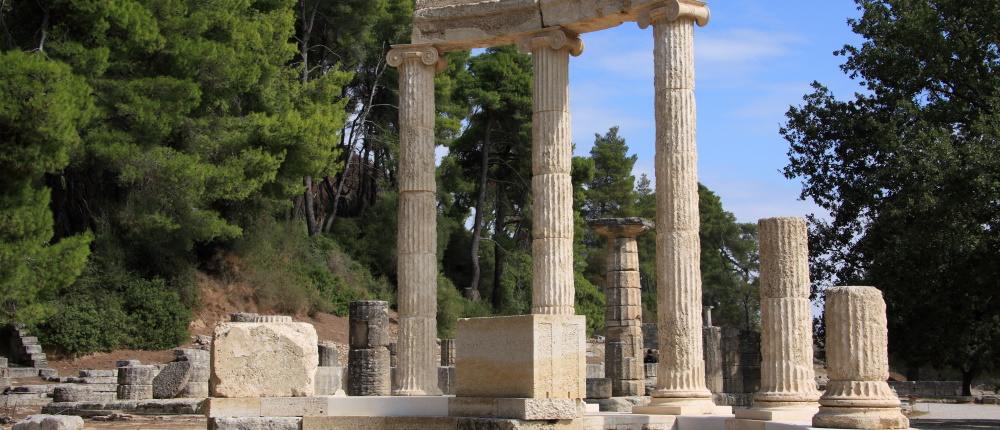
Olympia Through the Centuries
The sanctuary of Olympia is the birthplace of the Olympic Games and over its thousand-year history it hosted the ancient event a total of 293 times! Through religious ceremonies and festivities around the athletic events, the Olympic Games facilitated the development of a Greek sense of identity and the ideals of Hellenic culture.
The first Olympic Games took place in 776 BC as a local festival in honor of the god Zeus. Gradually, the festival gained popularity among an increasing number of Greek city-states that would send a delegation of their finest men every four years to participate in the athletic events. For the duration of the games a temporary truce was agreed between participating cities thus allowing the young athletes to participate unhindered by the prospect of war. The victors were presented with a wild olive wreath that bestowed honor to them, their family and their city for generations. When the victor returned to his city, part of the city walls where torn down to symbolize that a city mighty enough to produce an Olympic champion, had no need of walls to protect it. As the games grew in popularity, so did Olympia. Around 472 BC, when Olympia was at the height of its glory, the sanctuary of Olympia underwent a major restoration, as did the Temple of Zeus and its monumental gold and ivory statue of the god - which was one of the Seven Wonders of the Ancient World.
In the early years following the Roman conquest, Olympia gradually began to lose its luster, toward the end of the Hellenistic period. However, once the Romans secured their rule over Greece, Olympia enjoyed a period of revival thanks to imperial sponsorship. In 393 AD, the Christian religion was gaining ground throughout the Roman Empire and as a consequence, the Olympic Games were abolished by Emperor Theodosius I because of their pagan origins. Thus the games stopped, the ancient temples of Olympia were converted into churches and important artifacts including the golden statue of Zeus were transferred to Constantinople.
The Olympic Games were resurrected from the ashes of history thanks to the vision of Frenchman Baron Pierre de Coubertin. He founded the International Olympic Committee in 1894 and within two years the first modern Olympic Games were hosted in Athens in 1896. Today, the Olympic Games are the grandest sporting event in the world and they are hosted by a different country every four years. Yet, to this day the Olympics still begin at the ancient site of Olympia in a solemn ceremony: a special mirror catches the sunlight and focuses it to light the torch, which it is then carried around the world to light the Olympic flame in the host city marking the beginning of the Olympic Games.
The first Olympic Games took place in 776 BC as a local festival in honor of the god Zeus. Gradually, the festival gained popularity among an increasing number of Greek city-states that would send a delegation of their finest men every four years to participate in the athletic events. For the duration of the games a temporary truce was agreed between participating cities thus allowing the young athletes to participate unhindered by the prospect of war. The victors were presented with a wild olive wreath that bestowed honor to them, their family and their city for generations. When the victor returned to his city, part of the city walls where torn down to symbolize that a city mighty enough to produce an Olympic champion, had no need of walls to protect it. As the games grew in popularity, so did Olympia. Around 472 BC, when Olympia was at the height of its glory, the sanctuary of Olympia underwent a major restoration, as did the Temple of Zeus and its monumental gold and ivory statue of the god - which was one of the Seven Wonders of the Ancient World.
In the early years following the Roman conquest, Olympia gradually began to lose its luster, toward the end of the Hellenistic period. However, once the Romans secured their rule over Greece, Olympia enjoyed a period of revival thanks to imperial sponsorship. In 393 AD, the Christian religion was gaining ground throughout the Roman Empire and as a consequence, the Olympic Games were abolished by Emperor Theodosius I because of their pagan origins. Thus the games stopped, the ancient temples of Olympia were converted into churches and important artifacts including the golden statue of Zeus were transferred to Constantinople.
The Olympic Games were resurrected from the ashes of history thanks to the vision of Frenchman Baron Pierre de Coubertin. He founded the International Olympic Committee in 1894 and within two years the first modern Olympic Games were hosted in Athens in 1896. Today, the Olympic Games are the grandest sporting event in the world and they are hosted by a different country every four years. Yet, to this day the Olympics still begin at the ancient site of Olympia in a solemn ceremony: a special mirror catches the sunlight and focuses it to light the torch, which it is then carried around the world to light the Olympic flame in the host city marking the beginning of the Olympic Games.
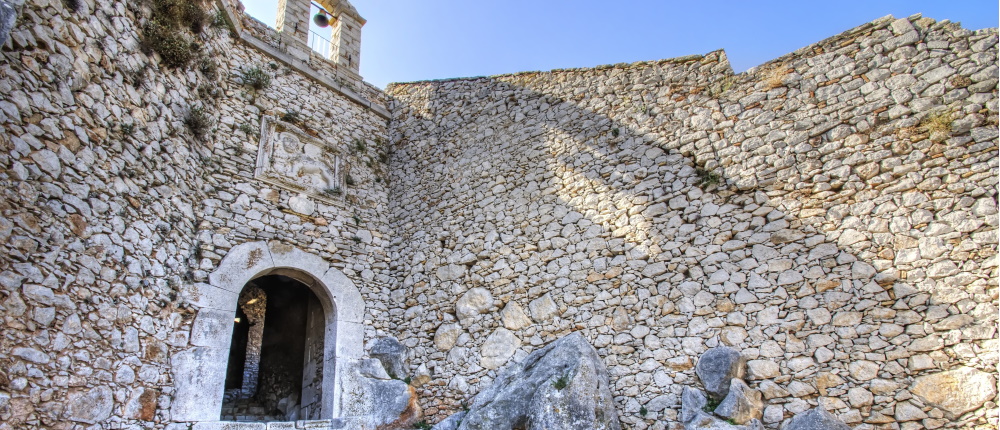
Nafplio Through the Centuries
Nafplio has a long history, with some sources dating back to as early as the 17th century BC. Where Nafplio is today, once stood the ancient city of Nafplia which according to legend was founded by Nafplios, son of Poseidon and Amimoni. Nafplia remained an independent city state until the 7th century BC when it was conquered by its neighboring city of Argos shortly before the end of the second Messinian war. The city was consequently turned into a seaport for Argos; it gradually lost its significance and by the 2nd century BC it was abandoned. The only exception was the hill of Akronafplia that was fortified during the Hellenistic period; some sections of this fortification still exist today.
During the 6th and 9th century AD, Barbarian invasions in the Peloponnese were commonplace. To shelter themselves from foreign threat, a number of resident from the central region of the Peloponnese settled in the ancient fortified hill of Akronafplia. This act marked the inception of modern Nafplio.
Nafplio was able to flourish in the ensuing centuries, largely because the Crusaders from Western Europe who took over much of Greece during the 13th century AD managed to keep the city out of the hands of the Ottoman Turks, except for two relatively brief periods from 1540-1686 and 1715- 1822. The Turkish conquerors where permanently ousted from the city of Nafplio during the Greek War for Independence (1821-1832) and Ioannis Kapodistrias, the first president of the newly
founded Greek nation, chose Nafplio as the nation’s capital.
In 1831, Kapodistrias was assassinated by rival Greeks in front of Nafplio’s church of Agios Spyridon. In 1833, Otto of Bavaria - who was chosen by the Great Powers to be the King of Greece - first came ashore in Nafplio and thus it remained the country’s capital until 1834 when it was moved to Athens. Nafplio marked another important point in history during the second world war; in April of 1941, it was the scene of frightful loss of both personnel and ships as the British tried to evacuate thousands of their troops ahead of the advancing German forces.
Since then, the beautiful city of Nafplio has had many decades to recover and establish itself as an attractive destination, as well as way station for visitors who are exploring the Peloponnese. Its three impressive forts - Bourtzi, Akronafplia and Palamidi - dominate the town’s visual landscape and are physical examples of the efforts of many generations of people; they are also a living testament to the city’s rich, yet turbulent historical past.
Nafplio today is a harmonious amalgamation of past and present. Contemporary Greek life unfolds alongside the city’s great stone forts, scenic old churches and stately neoclassicical architecture. Nafplio is a lovely modern Greek city encased within a shell of fascinating historical and cultural heritage.
During the 6th and 9th century AD, Barbarian invasions in the Peloponnese were commonplace. To shelter themselves from foreign threat, a number of resident from the central region of the Peloponnese settled in the ancient fortified hill of Akronafplia. This act marked the inception of modern Nafplio.
Nafplio was able to flourish in the ensuing centuries, largely because the Crusaders from Western Europe who took over much of Greece during the 13th century AD managed to keep the city out of the hands of the Ottoman Turks, except for two relatively brief periods from 1540-1686 and 1715- 1822. The Turkish conquerors where permanently ousted from the city of Nafplio during the Greek War for Independence (1821-1832) and Ioannis Kapodistrias, the first president of the newly
founded Greek nation, chose Nafplio as the nation’s capital.
In 1831, Kapodistrias was assassinated by rival Greeks in front of Nafplio’s church of Agios Spyridon. In 1833, Otto of Bavaria - who was chosen by the Great Powers to be the King of Greece - first came ashore in Nafplio and thus it remained the country’s capital until 1834 when it was moved to Athens. Nafplio marked another important point in history during the second world war; in April of 1941, it was the scene of frightful loss of both personnel and ships as the British tried to evacuate thousands of their troops ahead of the advancing German forces.
Since then, the beautiful city of Nafplio has had many decades to recover and establish itself as an attractive destination, as well as way station for visitors who are exploring the Peloponnese. Its three impressive forts - Bourtzi, Akronafplia and Palamidi - dominate the town’s visual landscape and are physical examples of the efforts of many generations of people; they are also a living testament to the city’s rich, yet turbulent historical past.
Nafplio today is a harmonious amalgamation of past and present. Contemporary Greek life unfolds alongside the city’s great stone forts, scenic old churches and stately neoclassicical architecture. Nafplio is a lovely modern Greek city encased within a shell of fascinating historical and cultural heritage.
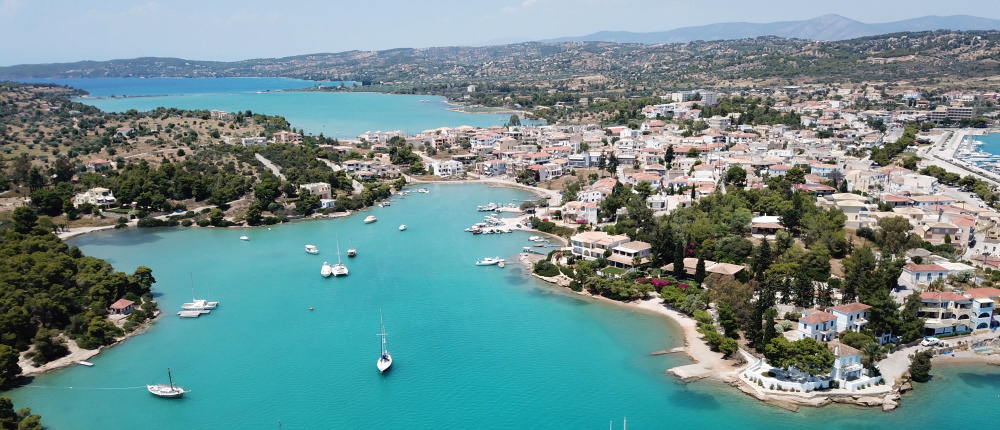
Porto Heli Through the Centuries
Thanks to its mild climate and natural harbor, Porto Heli has been populated since antiquity. Between the 7th and 3rd centuries BC, a compact walled town called Halieis stood on the southern side of the Porto Heli bay; its Acropolis was located on the top of the hill overlooking the city, in the area known today as Kastraki. The Halieis settlement occupied a considerable area of land that stretched from the hill to the coastline, as well as areas of land that have been swallowed by the sea over the centuries.
Halieis was at its peak for a period of about one hundred years between 468 and 362 BC, and like the majority of ancient cities, it was surrounded by walls, towers, and gates that were meant to protect the city and its inhabitants. During this time, it is estimated that there were about 2500 residents and 400-500 homes. Halieis is said to have been so carefully planned that each home and public building had its own yard; in fact, its unique city layout has been recorded in history. At the height of its power, Halieis traded various sought-after goods, including olive oil, fine wine, and the coveted porphyra dye, which in ancient times was the most expensive and sought-after type of dye; its vibrant, deep purple-red color was symbolic of wealth and power, and associated with gods and royalty. Yet, the city’s success was without a doubt because of the location of its acropolis and natural harbor, which allowed for easy access to naval trade; it was the combination of these unique characteristics that made the city of Halieis famous throughout the ancient world.
By 300 BC, the city’s defences were destroyed and Halieis disappeared from historical record. Even though the exact reasons behind the abandonment of Halieis are lost to history, it is speculated that it was the result of successive attempts by Sparta and Athens to capture the land and take advantage of its natural harbor and strategic location. Some remains of the city of Halieis can be seen today, such as parts of the acropolis, as well as a few towers and barracks from the 4th century BC. An open-air sanctuary that was most likely built for Athena Polias, the city’s guardian, also lies at the northern part of the archaeological site.
Today, Porto Heli has distinguished itself as a high-end resort destination in the Peloponnese with highly developed tourism infrastructure and culture. Despite its modernization, Porto Heli is still at heart a small and traditional Greek fishing village. Its quaint natural surroundings, important archaeological sites, and resilient traditional character welcome thousands of visitors from all over the globe.
Halieis was at its peak for a period of about one hundred years between 468 and 362 BC, and like the majority of ancient cities, it was surrounded by walls, towers, and gates that were meant to protect the city and its inhabitants. During this time, it is estimated that there were about 2500 residents and 400-500 homes. Halieis is said to have been so carefully planned that each home and public building had its own yard; in fact, its unique city layout has been recorded in history. At the height of its power, Halieis traded various sought-after goods, including olive oil, fine wine, and the coveted porphyra dye, which in ancient times was the most expensive and sought-after type of dye; its vibrant, deep purple-red color was symbolic of wealth and power, and associated with gods and royalty. Yet, the city’s success was without a doubt because of the location of its acropolis and natural harbor, which allowed for easy access to naval trade; it was the combination of these unique characteristics that made the city of Halieis famous throughout the ancient world.
By 300 BC, the city’s defences were destroyed and Halieis disappeared from historical record. Even though the exact reasons behind the abandonment of Halieis are lost to history, it is speculated that it was the result of successive attempts by Sparta and Athens to capture the land and take advantage of its natural harbor and strategic location. Some remains of the city of Halieis can be seen today, such as parts of the acropolis, as well as a few towers and barracks from the 4th century BC. An open-air sanctuary that was most likely built for Athena Polias, the city’s guardian, also lies at the northern part of the archaeological site.
Today, Porto Heli has distinguished itself as a high-end resort destination in the Peloponnese with highly developed tourism infrastructure and culture. Despite its modernization, Porto Heli is still at heart a small and traditional Greek fishing village. Its quaint natural surroundings, important archaeological sites, and resilient traditional character welcome thousands of visitors from all over the globe.
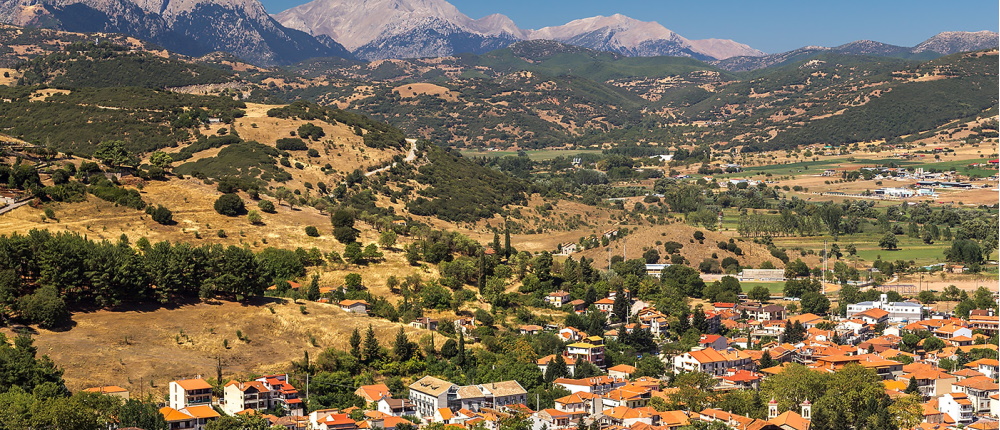
Kalavryta Through the Centuries
An area inhabited since antiquity, the modern city of Kalavryta is built near the ancient city of Cynaetha, which played a comparatively minor role in the great drama of the ancient Greek world.
During the late Middle Ages, Kalavryta was the center of the Barony of Kalavryta under Frankish rule, and it was annexed by the Byzantine Empire in the 1270s before falling to the Ottomans in 1460 along with the rest of Morea. Kalavryta remained under Ottoman control until the beginning of the Greek War of Independence on March 21, 1821, when the flag of the revolution was raised outside the monastery of Agia Lavra by bishop Paleon Patron Germanos III.
During World War II, Kalavryta the capture and execution of German troops by Greek partisans in December of 1943 lead to a brutal retribution on the part of German forces in what came to be known as the Massacre of Kalavryta. All male residents of Kalavryta aged 14 and up where rounded up and moved to a field outside the village while younger children and womenfolk where locked inside a school building. The school was set on fire while the male captives were made to watch before being gunned down. The day following the massacre, the Nazi forces set fire to the monastery of Agia Lavra where the Greek Revolution of 1821 was declared before leaving the town. Only 13 men and some of the women and children that managed to escape from the school survived. This atrocious act of war is commemorated to this day by a large white cross marking the location where the men of the village where executed.
In the decades that followed, Kalavryta rose from its ashes and became a successful winter tourism destination thanks to its ski center that is one of the largest in Greece. The beautiful gorges, caves, and forests that surround the town also offer enticing hiking opportunities during the warmer months of the year.
During the late Middle Ages, Kalavryta was the center of the Barony of Kalavryta under Frankish rule, and it was annexed by the Byzantine Empire in the 1270s before falling to the Ottomans in 1460 along with the rest of Morea. Kalavryta remained under Ottoman control until the beginning of the Greek War of Independence on March 21, 1821, when the flag of the revolution was raised outside the monastery of Agia Lavra by bishop Paleon Patron Germanos III.
During World War II, Kalavryta the capture and execution of German troops by Greek partisans in December of 1943 lead to a brutal retribution on the part of German forces in what came to be known as the Massacre of Kalavryta. All male residents of Kalavryta aged 14 and up where rounded up and moved to a field outside the village while younger children and womenfolk where locked inside a school building. The school was set on fire while the male captives were made to watch before being gunned down. The day following the massacre, the Nazi forces set fire to the monastery of Agia Lavra where the Greek Revolution of 1821 was declared before leaving the town. Only 13 men and some of the women and children that managed to escape from the school survived. This atrocious act of war is commemorated to this day by a large white cross marking the location where the men of the village where executed.
In the decades that followed, Kalavryta rose from its ashes and became a successful winter tourism destination thanks to its ski center that is one of the largest in Greece. The beautiful gorges, caves, and forests that surround the town also offer enticing hiking opportunities during the warmer months of the year.
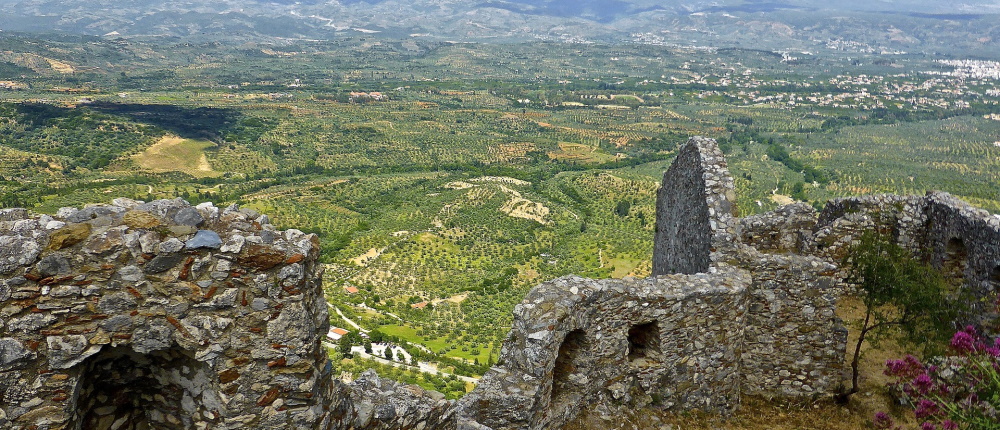
Mystras Through the Centuries
Following the conquest of much of Laconia in late 1248 that had begun in the aftermath of the Fourth Crusade, William II of Villehardouin, ruler of the Frankish Principality of Achaea, decided to build a series of fortresses to fortify his newly conquered lands and consolidate his rule. One of these fortresses built on the slopes of Mount Taygetus came to be known as Mystras.
In 1261, the forces of the Nicaean emperor Michael VIII Palaiologos defeated and captured the Frankish prince, and proceeded to bring Constantinople back under Byzantine control. In exchange for the prince’s freedom, the Byzantine emperor demanded an oath of fealty and ordered for Mystras along with other fortified cities to be handed over to the Byzantines. Though terms where agreed upon, as soon as William of Villehardouin returned to Morea (modern day Peloponnese) he renounced his oath and war was reignited between the Byzantines and the Franks. The constant fighting in the region forced local populations to abandon their lands and seek refuge under the shadow of Mystras’ fortress where a new town was built.
From 1348 to 1460, Mystras functioned as the residence of a Despot who ruled over the Byzantine Morea. During this period, it was in Mystras that the Byzantine Empire experienced its final cultural Renaissance with art and philosophy flourishing within the walled city. The frescoes in the Peribleptos Monastery Church and the Neoplatonic teachings of George Gemistos Plethon and other scholars are excellent examples of the city’s golden era.
The last Byzantine emperor - Constantine XI Palaiologos, was despot at Mystras before assuming control of the Byzantine Empire in its final years. After the fall of Constantinople, Demetrius Palaeologus who was despot of Morea at the time surrendered the city to the Ottoman emperor Mehmed II in 1460. The Ottomans held continuous control of Mystras from 1460 until the start of the Greek Revolution of 1821, except for a brief period between 1687 and 1715 when the city came under Venetian occupation. Under King Otto, Mystras was abandoned by its inhabitants in favor of the newly rebuilt town of Sparta and in 1989, the ruined citadel of Mystras was named a UNESCO World Heritage Site.
In 1261, the forces of the Nicaean emperor Michael VIII Palaiologos defeated and captured the Frankish prince, and proceeded to bring Constantinople back under Byzantine control. In exchange for the prince’s freedom, the Byzantine emperor demanded an oath of fealty and ordered for Mystras along with other fortified cities to be handed over to the Byzantines. Though terms where agreed upon, as soon as William of Villehardouin returned to Morea (modern day Peloponnese) he renounced his oath and war was reignited between the Byzantines and the Franks. The constant fighting in the region forced local populations to abandon their lands and seek refuge under the shadow of Mystras’ fortress where a new town was built.
From 1348 to 1460, Mystras functioned as the residence of a Despot who ruled over the Byzantine Morea. During this period, it was in Mystras that the Byzantine Empire experienced its final cultural Renaissance with art and philosophy flourishing within the walled city. The frescoes in the Peribleptos Monastery Church and the Neoplatonic teachings of George Gemistos Plethon and other scholars are excellent examples of the city’s golden era.
The last Byzantine emperor - Constantine XI Palaiologos, was despot at Mystras before assuming control of the Byzantine Empire in its final years. After the fall of Constantinople, Demetrius Palaeologus who was despot of Morea at the time surrendered the city to the Ottoman emperor Mehmed II in 1460. The Ottomans held continuous control of Mystras from 1460 until the start of the Greek Revolution of 1821, except for a brief period between 1687 and 1715 when the city came under Venetian occupation. Under King Otto, Mystras was abandoned by its inhabitants in favor of the newly rebuilt town of Sparta and in 1989, the ruined citadel of Mystras was named a UNESCO World Heritage Site.
